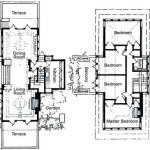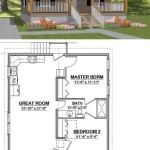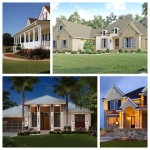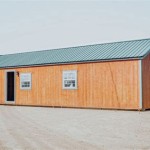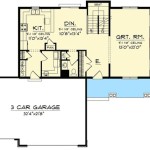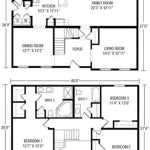Blue Bird House Plans are detailed instructions and diagrams for building and assembling a birdhouse specifically designed to attract and provide shelter for bluebirds. These plans typically include specifications for the size, shape, materials, and construction techniques required to create an effective and safe nesting environment for these birds.
Bluebird populations have experienced declines in recent years due to habitat loss and competition from other species. Building bluebird houses can help support and increase their numbers by providing them with a suitable place to nest and raise their young. Blue Bird House Plans are an essential tool for anyone looking to contribute to the conservation of these beautiful birds.
In this article, we will explore the various aspects of Blue Bird House Plans, including different designs, materials, construction techniques, and placement considerations. We will also provide guidance on how to monitor and maintain your bluebird house to ensure its continued success.
Here are 10 important points about Blue Bird House Plans:
- Use untreated wood.
- Size: 5″ x 5″ x 8″ high.
- 1.5″ entrance hole.
- Place 5-6′ off the ground.
- Face the entrance east.
- Provide drainage holes.
- Clean out old nests annually.
- Monitor for predators.
- Consider multiple houses.
- Avoid using paint or stain.
Following these guidelines will help you create a successful Blue Bird House that will attract and support these beautiful birds.
Use untreated wood.
When building a bluebird house, it is important to use untreated wood. Treated wood contains chemicals that can be harmful to birds, and these chemicals can leach into the soil and water, harming other wildlife as well. Untreated wood is also more porous than treated wood, which allows for better ventilation and drainage. This is important for bluebirds, as they need a dry and well-ventilated nest to raise their young.
There are many different types of untreated wood that can be used to build a bluebird house. Some popular choices include cedar, pine, and cypress. Cedar is a naturally rot-resistant wood, making it a good choice for outdoor projects. Pine is a more affordable option, but it is not as rot-resistant as cedar. Cypress is a good compromise between cedar and pine, as it is both rot-resistant and affordable.
When choosing untreated wood for your bluebird house, be sure to select boards that are free of knots and cracks. These imperfections can weaken the wood and make it more susceptible to rot and damage.
Once you have selected your wood, you can begin building your bluebird house. Be sure to follow the plans carefully and use the correct materials and techniques. With a little care and attention, you can create a beautiful and functional bluebird house that will provide a safe and comfortable home for these beautiful birds.
Size: 5″ x 5″ x 8″ high.
The size of your bluebird house is important for several reasons. First, it needs to be large enough to accommodate a nesting pair of bluebirds and their young. Second, it needs to be small enough to prevent other, larger birds from nesting inside. And third, it needs to be the right height to keep the nestlings safe from predators.
- 5″ x 5″ interior floor space
This is the minimum amount of space needed for a nesting pair of bluebirds and their young. The floor space should be square, not rectangular. - 8″ high
This is the ideal height for a bluebird house. It is high enough to keep the nestlings safe from predators, but not so high that the adult bluebirds have difficulty entering and exiting the house. - 1.5″ entrance hole
The entrance hole should be 1.5″ in diameter. This is large enough for bluebirds to enter and exit the house, but small enough to prevent other, larger birds from nesting inside. - Sloping roof
The roof of the bluebird house should be sloped to prevent water from pooling on top. This will help to keep the nest dry and prevent the wood from rotting.
By following these guidelines, you can create a bluebird house that is the perfect size for your feathered friends.
1.5″ entrance hole.
The size of the entrance hole is one of the most important aspects of a bluebird house. The hole should be large enough for bluebirds to enter and exit the house easily, but small enough to prevent other, larger birds from nesting inside. The ideal size for a bluebird house entrance hole is 1.5 inches in diameter.
There are several reasons why the entrance hole should be 1.5 inches in diameter. First, this size hole is large enough for bluebirds to enter and exit the house without difficulty. Second, a 1.5-inch hole is small enough to prevent larger birds, such as house sparrows and starlings, from nesting inside. These larger birds can be aggressive towards bluebirds and may even kill their young.
In addition to the size of the entrance hole, the shape of the hole is also important. The entrance hole should be round, not oval or square. A round hole is less likely to be enlarged by predators, such as raccoons and squirrels.
The placement of the entrance hole is also important. The hole should be placed near the top of the house, but not too high. The hole should be high enough to prevent predators from reaching the nestlings, but low enough to allow the adult bluebirds to easily enter and exit the house.
By following these guidelines, you can create a bluebird house with an entrance hole that is the perfect size and shape for your feathered friends.
Place 5-6′ off the ground.
The height at which you place your bluebird house is important for several reasons. First, it needs to be high enough to keep the nestlings safe from predators, such as cats and snakes. Second, it needs to be low enough to allow the adult bluebirds to easily enter and exit the house. And third, it needs to be placed in a location that receives plenty of sunlight.
- 5-6′ off the ground
This is the ideal height for a bluebird house. It is high enough to keep the nestlings safe from predators, but not so high that the adult bluebirds have difficulty entering and exiting the house. - In a sunny location
Bluebirds prefer to nest in sunny locations. This is because the sun helps to keep the nest warm and dry. When choosing a location for your bluebird house, be sure to select a spot that receives plenty of sunlight throughout the day. - Away from trees and shrubs
Bluebirds do not like to nest in close proximity to trees and shrubs. This is because trees and shrubs can provide cover for predators. When choosing a location for your bluebird house, be sure to select a spot that is away from any trees or shrubs. - In a field or meadow
Bluebirds prefer to nest in open areas, such as fields and meadows. This is because open areas provide good visibility, which helps the bluebirds to spot predators. When choosing a location for your bluebird house, be sure to select a spot that is in a field or meadow.
By following these guidelines, you can place your bluebird house in a location that is safe and comfortable for your feathered friends.
Face the entrance east.
The direction in which you face the entrance hole of your bluebird house is important for several reasons. First, bluebirds prefer to nest in houses that face east. This is because the sun rises in the east, and bluebirds like to have the morning sun warm their nest.
Second, facing the entrance east helps to protect the nest from the prevailing winds. In most parts of the United States, the prevailing winds come from the west. By facing the entrance east, you can help to protect the nest from the wind and rain.
Third, facing the entrance east helps to keep the nest cool in the summer. The sun is highest in the sky during the middle of the day, and the afternoon sun can be very hot. By facing the entrance east, you can help to keep the nest cool and comfortable for the nestlings.
Finally, facing the entrance east helps to deter predators. Many predators, such as raccoons and snakes, are more active at night. By facing the entrance east, you can make it more difficult for predators to find the nest.
By following these guidelines, you can help to create a safe and comfortable home for your bluebird family.
Provide drainage holes.
Drainage holes are an important feature of any bluebird house. They allow water to drain out of the house, which helps to keep the nest dry and prevent the eggs and nestlings from getting wet. Drainage holes also help to prevent the growth of mold and mildew, which can be harmful to bluebirds.
There should be at least two drainage holes in the floor of the bluebird house. The holes should be about 1/4 inch in diameter and should be placed near the corners of the house. This will allow water to drain out of the house even if the house is tilted slightly.
In addition to the drainage holes in the floor, there should also be a drainage hole in the roof of the house. This hole should be about 1/2 inch in diameter and should be placed near the peak of the roof. This hole will allow water to drain out of the house if it rains heavily.
By providing drainage holes in your bluebird house, you can help to keep the nest dry and prevent the eggs and nestlings from getting wet. This will help to increase the chances of your bluebirds successfully raising a family.
Here are some additional tips for providing drainage holes in your bluebird house:
- Make sure that the holes are large enough to allow water to drain out easily.
- Place the holes near the corners of the house or near the peak of the roof.
- Drill or punch the holes before you assemble the house.
- Be sure to countersink the holes so that they are flush with the surface of the wood.
By following these tips, you can provide drainage holes in your bluebird house that will help to keep the nest dry and prevent the eggs and nestlings from getting wet.
Clean out old nests annually.
One of the most important things you can do to maintain your bluebird house is to clean out the old nests annually. This will help to prevent the spread of diseases and parasites, and it will also make the house more attractive to new bluebirds.
To clean out the old nests, simply remove the roof of the house and scoop out the old nesting material. You can then disinfect the house with a mild bleach solution (one part bleach to nine parts water). Be sure to rinse the house thoroughly with water after disinfecting it.
Once the house is clean, you can add a new layer of nesting material. Bluebirds prefer to use soft, natural materials, such as grass clippings, pine needles, or wood chips. You can also add a small amount of nesting material to the bottom of the house to help the bluebirds get started.
By cleaning out the old nests annually, you can help to keep your bluebird house clean and free of diseases and parasites. This will help to attract new bluebirds to your yard and increase the chances of them successfully raising a family.
Monitor for predators.
Once you have placed your bluebird house, it is important to monitor it for predators. Predators can eat the eggs and nestlings, and they can also damage the house. Here are some tips for monitoring your bluebird house for predators:
- Check the house regularly.
You should check your bluebird house regularly for signs of predators. Look for tracks, droppings, or feathers around the house. You should also check the house for damage. If you find any signs of predators, you should take steps to remove them. - Remove predators.
If you find any predators near your bluebird house, you should remove them. You can do this by trapping them or by shooting them. You can also try to scare away predators by making noise or by using a predator decoy. - Protect the house.
You can help to protect your bluebird house from predators by taking some simple steps. You can place the house in a location that is not easily accessible to predators. You can also predator-proof the house by adding a baffle to the entrance hole. - Be patient.
It may take some time to deter predators from your bluebird house. Be patient and persistent, and eventually you will be successful.
By monitoring your bluebird house for predators, you can help to protect the eggs and nestlings. This will help to increase the chances of your bluebirds successfully raising a family.
Consider multiple houses.
If you want to attract more bluebirds to your yard, consider putting up multiple bluebird houses. Bluebirds are territorial birds, and they will often compete for the best nesting sites. By providing multiple houses, you can increase the chances that a pair of bluebirds will find a suitable nesting site in your yard.
When placing multiple bluebird houses, it is important to space them far enough apart so that the birds do not compete for the same territory. A good rule of thumb is to place the houses at least 100 feet apart.
You may also want to consider placing the houses in different locations. For example, you could place one house in a sunny location and another house in a shady location. This will give the bluebirds a choice of nesting sites and increase the chances that they will find a suitable location.
If you are serious about attracting bluebirds to your yard, consider putting up multiple bluebird houses. By providing multiple houses, you can increase the chances that a pair of bluebirds will find a suitable nesting site and successfully raise a family.
Here are some additional tips for considering multiple bluebird houses:
- Place the houses at least 100 feet apart.
This will help to prevent the birds from competing for the same territory. - Place the houses in different locations.
This will give the bluebirds a choice of nesting sites and increase the chances that they will find a suitable location. - Monitor the houses regularly.
This will help you to identify any problems with the houses or the birds. - Clean out the houses annually.
This will help to prevent the spread of diseases and parasites.
By following these tips, you can help to attract bluebirds to your yard and provide them with a safe and suitable nesting environment.
Avoid using paint or stain.
It is important to avoid using paint or stain on your bluebird house. Paint and stain can release harmful fumes that can be toxic to bluebirds and their young. In addition, paint and stain can seal the wood and prevent it from breathing, which can lead to moisture problems inside the house.
- Paint and stain can contain harmful chemicals.
These chemicals can be released into the air and can be harmful to bluebirds and their young. Some of the chemicals found in paint and stain have been linked to cancer, birth defects, and other health problems. - Paint and stain can seal the wood and prevent it from breathing.
This can lead to moisture problems inside the house. Moisture can cause the wood to rot and can also create a breeding ground for mold and mildew. Mold and mildew can be harmful to bluebirds and their young. - Paint and stain can make the house less attractive to bluebirds.
Bluebirds prefer natural looking houses. Paint and stain can make the house look artificial and less inviting to bluebirds. - Paint and stain can be difficult to remove.
If you ever need to repair or replace your bluebird house, it will be much more difficult if it is painted or stained.
For all of these reasons, it is best to avoid using paint or stain on your bluebird house. Instead, use natural materials such as wood, cedar, or pine. These materials are safe for bluebirds and their young, and they will help to create a natural looking house that is attractive to bluebirds.










Related Posts


